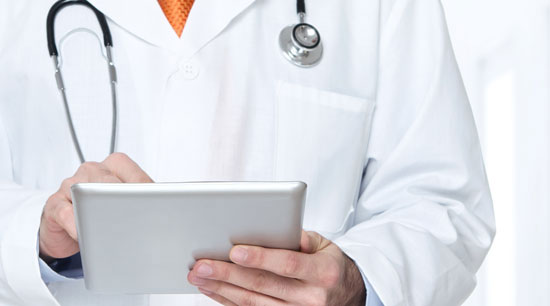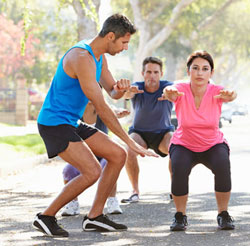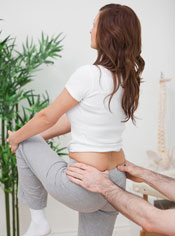4 Popular Treatments for Lower Back Pain that Work
By Sherwin Nicholson | Updated May 6, 2020

Back pain and treatment
Are you looking for options for your pain that are noninvasive and non surgical?
There are some options here that can work for you. They are definitely worth the time and investment as surgical options should always be regarded as a last choice.
Back pain is the most common cause of pain, loss of work productivity, sick leave and more. It is also among one of the most common musculoskeletal disorders. Due to its complexity, there seems to be an endless number of methods.
Most cases usually resolve themselves entirely without any care whatsoever. Usually, rest and medication are enough.
If you are like many of us, you are here because your discomfort has yet to be relieved.
While some cases are genetic, neurological or disease related, most are mechanical and can be treated.
The type of choice can greatly affect your outcome
Choosing the right option can be difficult due to your particular condition. Your choice can influence the long-term outcome of your recovery. One option, surgery has had mixed results. Here as much as 20% of surgery patients still report complication and discomfort.
85% of the causes are mechanical. Combined with the many different methods, this can make it one of the most difficult conditions to treat.
It can become tough, if not discouraging to find adequate help if the wrong help is followed.
It is important not to allow these obstacles from deterring one from getting appropriate help or to abandon it. Below is an outline of 4 popular and successful methods.
4 Treatment options that provide relief
NOTE: These options are non-invasive and non-surgical.
Acupuncture
This method has been increasingly popular in western culture in the past few decades. The placement of fine needles at specific anatomical points of the body. Insertion of the needles at predetermined areas and depths are done strictly for therapeutic purposes.
The treatment involves different techniques including needle thrusting, rotation, and electrical stimulation. Other methods include moxibustion, injection and laser acupuncture.
It is used to encourage the body to produce natural analgesics. It is considered safe and convenient with few complications. There is some degree of discomfort afterwards but it is temporary.
It is regarded as a popular method for the management. With the addition of dry needling, outcomes have improved as compared to acupuncture alone.
Acupuncture is not a one time treatment. It requires going for several sessions in order for it to work. Because you simply cannot self administer this treatment, you are relying on many visitations in order to achieve some relief from this technique.
Physical Activity
When an episode of lower back pain strikes, bed rest is often recommended by the family physician. Recommending rest infers that the patient invests the majority of their recovery period in bed with little activity.
As beneficial as this is, there is a limit to the amount of rest necessary for recovery. Too much bed rest has been observed to impair or even limit the recovery process.

Currently, it has been demonstrated that physical activity is more advantageous than that of best rest alone. Incorporating activity with bed rest speeds up the recovery process. It counteracts the negative effects of extensive rest.
Excessive rest causes muscle weakness, shortening, and tightness. It is found that resuming a course of gentle and gradual exercises and stretching your imbalanced and tight muscles after a few days of rest is highly beneficial for recovery.
Don’t allow physical activity to become too repetitive or dynamic. If this were to happen, then the treatment might contribute to your problem rather than treat it.
Electrical Stimulation
Electrical Muscle Stimulation (EMS) is used to invoke muscular stimulation through the placement of electrodes on the skin. The stimulation is used to contract the muscle (or muscles) in order the strengthen them. This helps to increase fitness and decrease muscle spasms.
Treatment involves stimulation for up to 30 minutes, a few times a day, weekly. EMS helps to restore muscle function, circulation, and conditioning.
This is a successful method for patients that have difficulty stimulating their muscle to the level required for EMS. There are caveats where EMS is not recommended such as pregnancy, pacemaker use, implanted devices, vascular and skin conditions.
Exercise Therapy (The most recommend but least preferred method)
This popular and successful method has been practiced for many years. Exercise therapy varies greatly  among practitioners. Examples of therapy include exercises exercises that can be performed at home.
among practitioners. Examples of therapy include exercises exercises that can be performed at home.
A health care professional initially recommends the use of exercise and prescribe it is an option to be practiced at home without supervision.
This method includes the same principles as mentioned before, but with the added requirement of returning to the treatment specialist on specific periods for progress monitoring.
Exercise therapy can also be performed with multiple patients or on a one-to-one basis.
This is a popular, recommended method. Because each patient has his own unique condition, the treatment or exercise is also unique. Provided that the patient is properly diagnosed and referred to the correct form of exercise therapy, a positive result is expected.
Exercise therapy can cause mild to moderate muscle soreness. With the right recommendations, an ideal treatment can be used to provide relief and restore lower back function.
For More Help:
TYPES OF LOWER BACK PAIN YOU MAY HAVE
References:
- Acute pain-Diagnosis and treatment of acute lbp. Casazza BA1.-http://www.ncbi.nlm.nih.gov/pubmedhealth/PMH0004668/
- Exercise, not to exercise, or how to exercise in patients with chronic pain? Applying science to practice.-http://www.ncbi.nlm.nih.gov/pubmed/24662498
- Intervertebral Disk Degeneration and Repair – James Dowdell, MD Mark Erwin, MD Theodoe Choma, MD Alexander Vaccaro, MD, PhD James Iatridis, PhD Samuel K. Cho, MD Neurosurgery (2017) 80 (3S):

